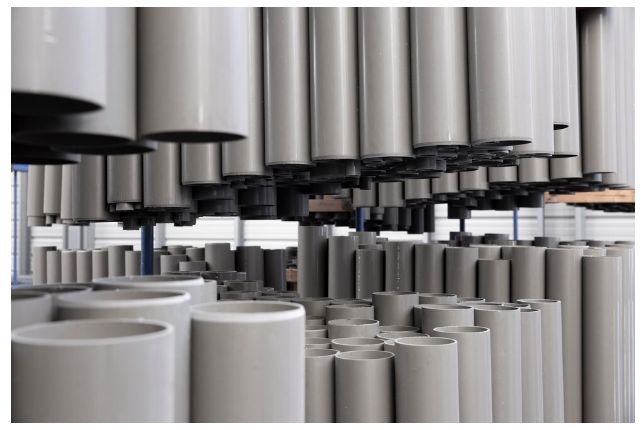Innovations and Sustainability in Plastic Tube Manufacturing
Plastic tube manufacturing plays a crucial role in producing versatile, durable, and convenient packaging solutions for a wide range of products. Whether for cosmetics, pharmaceuticals, or household items, plastic tubes have become the go-to option for brands seeking lightweight, customizable, and cost-effective packaging. The process behind plastic tube manufacturing involves various stages, each designed to ensure that the end product meets industry standards for durability, aesthetics and functionality.
The Manufacturing Process
The process of plastic tube manufacturing starts with the extrusion of plastic resins, commonly using materials like polyethylene (PE) or polypropylene (PP). These resins are heated until they reach a molten state and are then extruded into long, hollow tubes.The thickness and diameter of the tubes are carefully controlled based on the specific needs of the product they will contain.
Once the tubes are extruded, they are cooled and cut to the required length. At this point, the basic shape of the plastic tube is formed. Depending on the intended use, the tubes may then undergo additional processing to enhance their functionality or aesthetics.
Customization and Branding
One of the primary benefits of plastic tube manufacturing is the ability to customize the tubes to meet the unique branding and packaging needs of a company. Customization options include different shapes, sizes, colors, and finishes. For example, tubes can be produced with glossy, matte, or metallic finishes to give products a premium feel.
Printing directly on the tube is another critical aspect of customization. Many manufacturers use advanced printing techniques, such as offset or silk screen printing, to add logos, product descriptions, and other branding elements. This ensures that the tube not only serves as a functional container but also helps to reinforce brand identity on store shelves. The design possibilities are endless, allowing brands to be as creative as they want with their packaging.
Sealing and Capping
After the plastic tubes have been cut and printed, the next step involves sealing one end of the tube, creating a closed container. This is often done using heat sealing, which fuses the plastic to form a strong, leak-proof seal. Once sealed, the tubes are ready to be filled with product.
The filling process is typically done through the open end of the tube, after which a cap is applied to secure the contents. Caps come in various styles, including flip-top, screw-on, and dispenser caps, depending on the product’s intended use. For products that need to be dispensed in controlled amounts, like lotions or ointments, specialized applicators can also be added.
Quality Control
Maintaining a high standard of quality is paramount in plastic tube manufacturing, especially for industries like cosmetics and pharmaceuticals where product safety is crucial. Throughout the manufacturing process, rigorous quality control measures are implemented to ensure the consistency, safety, and functionality of the tubes.
For example, tests are conducted to check the strength of the seals, the durability of the printing, and the overall resilience of the tube under different conditions such as heat and pressure.This helps to ensure that the tube can protect the product inside while providing consumers with a reliable and convenient packaging solution.
Sustainability in Plastic Tube Manufacturing
As environmental concerns become more prevalent, the plastic tube manufacturing industry is increasingly focusing on sustainability. Traditionally, plastic tubes were made from virgin plastics derived from fossil fuels, contributing to environmental waste. However, manufacturers are now looking at ways to reduce their environmental footprint by incorporating more eco-friendly materials.
One approach is the use of post-consumer recycled (PCR) plastics. PCR plastics are made from recycled materials, helping to reduce the need for virgin plastic production and lowering the overall carbon footprint of the manufacturing process. In addition, some manufacturers are exploring biodegradable or compostable plastics, which break down more easily in the environment.
Other sustainable practices include using less energy during the production process and designing tubes that use less plastic without compromising durability or functionality. These efforts help companies meet the growing demand for environmentally responsible packaging while maintaining the quality and convenience that consumers expect.
The Importance of Plastic Tubes Across Industries
Plastic tube manufacturing has become indispensable in various industries, thanks to the flexibility and functionality that plastic tubes offer. In the cosmetics industry, plastic tubes are used to package products like lotions, creams, and gels, offering a convenient and hygienic way for consumers to access their products. In pharmaceuticals, tubes provide an airtight and secure packaging solution for ointments, gels, and creams, ensuring that the product remains safe and effective until it is used.
Plastic tubes are also commonly used in the food and beverage industry for products like sauces and condiments, and in the household sector for products like cleaning agents and adhesives. Their versatility makes them an essential packaging option for a wide range of applications.
Plastic tube manufacturing is a dynamic industry that offers practical, customizable, and sustainable packaging solutions. Whether for cosmetics, pharmaceuticals or household products, plastic tubes provide a reliable and convenient way to package and protect products. With ongoing innovations in sustainability and customization, plastic tubes continue to be a popular choice for brands seeking to enhance their packaging while minimizing environmental impact.


